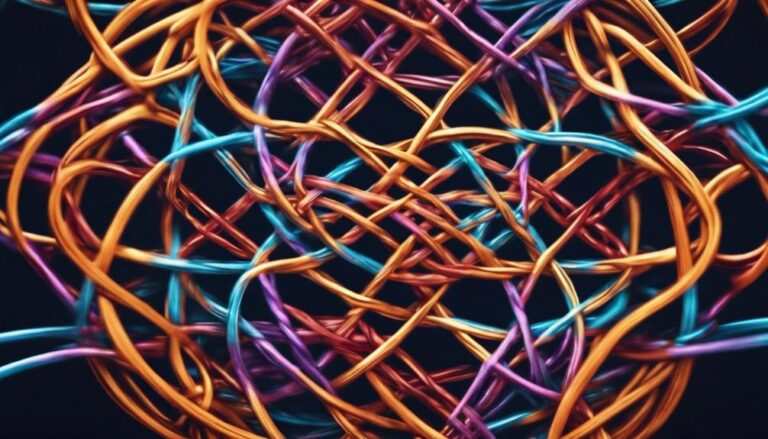The intersection of mathematics and computer science has birthed an intriguing domain that captivates both theorists and practitioners alike: quantum computing. Within this sphere, braid theory, a subset of knot theory, emerges as a significant concept. The foundational principles of braid theory not only enrich our understanding of mathematical constructs but also illuminate profound applications in quantum computing. This article endeavors to elucidate the role of braids within the context of quantum computers, addressing common observations and delving into the underpinnings of their fascination.
Braid theory, fundamentally, examines the types and properties of braids—twisted strands that can be manipulated without cutting. In classical mathematics, a braid can be defiantly simple, comprising a limited number of strands twisted together, yet its combinatorial complexity leads to a plethora of mathematical inquiries. The exhilaration surrounding this theory can be traced back to its ability to provide visual and tangible representations of abstract concepts. With advances in quantum computing, the nature of braids assumes a more complex characterization, serving as frameworks for understanding quantum entanglement and computation.
At the crux of quantum computing lies the qubit, the fundamental unit of quantum information. Unlike its classical counterpart, the bit—which assumes a fixed state of either 0 or 1—a qubit can exist in superpositions of states. This unique property enables quantum computers to perform computations at unprecedented speeds. However, the mathematical structures needed to describe the interactions between qubits become intricate. Herein, braid theory offers a sophisticated toolkit that aids in addressing the tangled state of quantum information.
To comprehend the relevance of braids in quantum computation, one must first navigate the nuanced relationship between quantum states and braids. When qubits are entangled, their states become inextricably linked in such a manner that the state of one qubit cannot be described independently of the other. This entanglement, a principle inherently perplexing, can be visualized through braids in a three-dimensional space. Each braid diagram encapsulates a unique representation of quantum states and their manipulations as they evolve across a computation.
Moreover, specific models within quantum computing, such as topological quantum computing, leverage braid theory directly. Topological quantum computers harness the properties of anyons—exotic particles that exist in two-dimensional spaces—to create qubits. The braiding of these anyons leads to the formation of braids representing qubit states. The distinct advantage of employing braids in this context is their inherent resistance to decoherence, a persistent obstacle in quantum computing. Decoherence threatens the stability of quantum states due to external environmental interactions, but braids, by their design, can preserve coherence through topological protections.
Additionally, the manipulation of braids allows for the implementation of quantum gates, the building blocks of quantum circuits. By constructing braids that correspond to specific logical operations, quantum gates can be performed on qubits in a deterministic manner. Each transformation represented by the braid corresponds directly to an operation that alters the state’s makeup. Clarity emerges from complexity; while each braid may take on an intricate form, its purpose is singular: to effectuate a quantum operation that empowers the overall computational process.
One fascinating aspect of braids in quantum computing is their potential for fault tolerance. As quantum systems scale, the introduction of errors becomes inevitable. However, the braiding operations, which are non-local, provide an inherent resilience to noise. The interplay between different braids can encode error-correcting features, thereby enhancing the reliability of computations. This robustness introduces a level of abstraction that not only bolsters performance but deepens our philosophical inquiry into what constitutes information in the quantum realm.
The reverberations of braid theory extend beyond practical applications; they beckon a deeper provocation of thought. How do we reconcile the abstract mathematical constructs with the tangible realities of computation? Braid theory prompts questions regarding the nature of reality itself. In employing braids, we navigate a landscape where physical phenomena are intricately connected with mathematical formulations, challenging our conceptual frameworks and reconceptualizing our understanding of computation.
In summation, the utilization of braid theory within quantum computing opens new avenues for exploration and understanding. The threads connecting braids and qubits weave a narrative that highlights their essential roles in the burgeoning field of quantum technology. From visualizing entangled states to facilitating fault-tolerant quantum gates, the fascinating application of braids underscores a myriad of potential outcomes in quantum computation. As research progresses, one can anticipate further revelations about the interplay between mathematics and quantum mechanics and a consequential refinement of our understanding of the fabric of reality itself. Future advancements promise not only to elucidate the complexities of quantum states but also to enthrall those captivated by the intricate dance of braids in the quantum domain.












